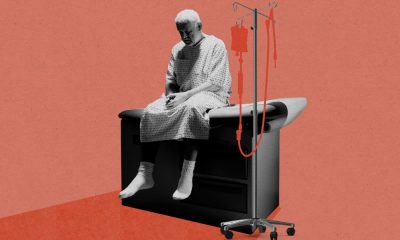A new, revealing study has found healthy dogs and cats can transmit multidrug-resistant organisms to their hospitalized owners and vice versa.
The study is being presented at this year’s European Congress of Clinical Microbiology & Infectious Diseases in Copenhagen, Denmark.
Led by Dr. Carolin Hackmann from Charité University Hospital Berlin, Germany, the study enrolled more than 2,800 hospital patients and their pets to test their hypothesis.
“Our findings verify that the sharing of multidrug-resistant organisms between companion animals and their owners is possible,” said Dr. Hackmann, SciTechDaily reported. “However, we identified only a handful of cases suggesting that neither cat nor dog ownership is an important risk factor for multidrug-resistant organism colonization in hospital patients.”
Antimicrobial resistance refers to the increased resilience of infection-causing microbes to the drugs used to kill them. As per the outlet, antimicrobial-resistant infections were responsible for more than 1.3 million deaths, and were connected to 5 million deaths across the globe in 2019.
For the study, researchers focused on the most common superbugs found in hospital patients–methicillin-resistant Staphylococcus aureus, vancomycin-resistant enterococci, 3rd generation cephalosporin-resistant Enterobacterales and carbapenem-resistant Enterobacterales.
Called multidrug-resistant organisms (MDROs), these bacteria are resistant to treatment with more than one antibiotic.
In the study, nasal and rectal swabs were collected from around 3000 patients hospitalized in Charité University Hospital, Berlin, as well as from any dogs and cats that lived in their households.
The presence of the type of bacteria was identified by genetic sequencing.
Following analysis, it was found 30% of hospital patients tested positive for MDROs, and 70% tested negative. Furthermore, among those who tested MDRO-positive, the rate of dog ownership and cat ownership was 11% and 9% respectively. The figure was 13% in MDRO-negatives.
Moreover, all pet owners were requested to collect and send throat and stool swab samples of their pets. And 300 pet owners sent back samples from 400 pets. It was found 15% of dogs and 5% of cats tested positive for at least one MDRO.
“Although the level of sharing between hospital patients and their pets in our study is very low, carriers can shed bacteria into their environment for months, and they can be a source of infection for other more vulnerable people in the hospital such as those with a weak immune system and the very young or old,” Dr. Hackmann concluded, according to The Guardian.
In other news, an animal shelter in Luzerne County, Pennsylvania, has temporarily shut down after dozens of dogs contracted canine influenza.
“A few of our dogs started to get diarrhea, but that’s pretty normal for dogs that are in a new stressful environment. When our longer-term dogs started to get diarrhea and started not wanting to eat, we realized they weren’t themselves, that’s when we knew something was wrong,” shelter volunteer Emma Ripka said.
















